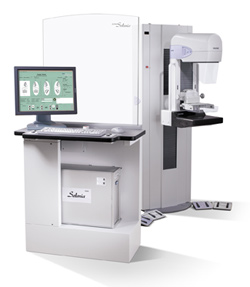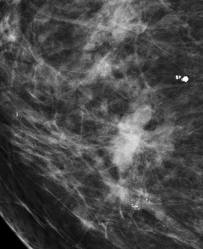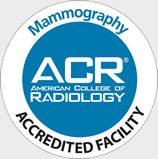| Our Radiologist and Staff |
| 1.5 T MRI Scan |
| Multi Slice CT Scan |
| Ultrasound Exam |
| Digital Mammography |
| Computed Radiography X-Ray |
| Bone Density |
| Virtual Tour |
| Womens Center |


Digital Mammography

Technology - Hologic Selenia Digital Mammography
The Selenia full-field digital mammography system provides exceptional image quality and improves the efficiency of exams, shortening each patient's examination time.
Breast cancer, the most common cancer among women other than skin cancer, is a frightening disease. Although there has been a decline in the rate of deaths from breast cancer in recent years, it is still the second leading cause of cancer death in women, exceeded only by lung cancer.
Early detection of breast cancer greatly improves the chances for successful treatment.
When breast cancer is detected before it has spread to lymph nodes or to other parts of the body, the 5-year survival rate is 90%.
Methods for early detection of breast cancer include breast clinical examinations by a health care professional, and mammography. In most cases, mammography can identify an abnormal breast mass as much as two years before it can be detected by touch.
The American Cancer Society recommends the following guidelines for breast cancer screening in women who have no symptoms of breast cancer:
Recommendation
Women in their 20s and 30s should have a clinical breast examination by a health care professional every 3 years.
Beginning at age 40, women should have a clinical breast examination by a health care professional every year.
Women age 40 and older should have a screening mammogram every year and should continue to do so for as long as they are in good health.
Women at a greater than 20% lifetime risk (high risk) should get an MRI of the breasts and a mammogram every year. The American Cancer Society recommends that this screening program should begin at age 30 and continue for as long as a women is in good health; however, there is limited evidence about the best age to start screening. Women who have been determined to be at high risk should consult their health care provider to decide on the right screening regimen for them, taking personal circumstances and preferences into consideration.
Women at a 15% to 20% lifetime risk (moderate risk) should talk with their health care providers about the benefits and limitations of adding MRI screening to their yearly mammogram.
Breast self examination is an option for women starting in their 20s. Women should be told about the benefits and limitations of a BSE. Women should report any breast changes to their health professional right away.
Please visit the American Cancer Society» website for more detailed information about their guidelines for breast cancer screening.